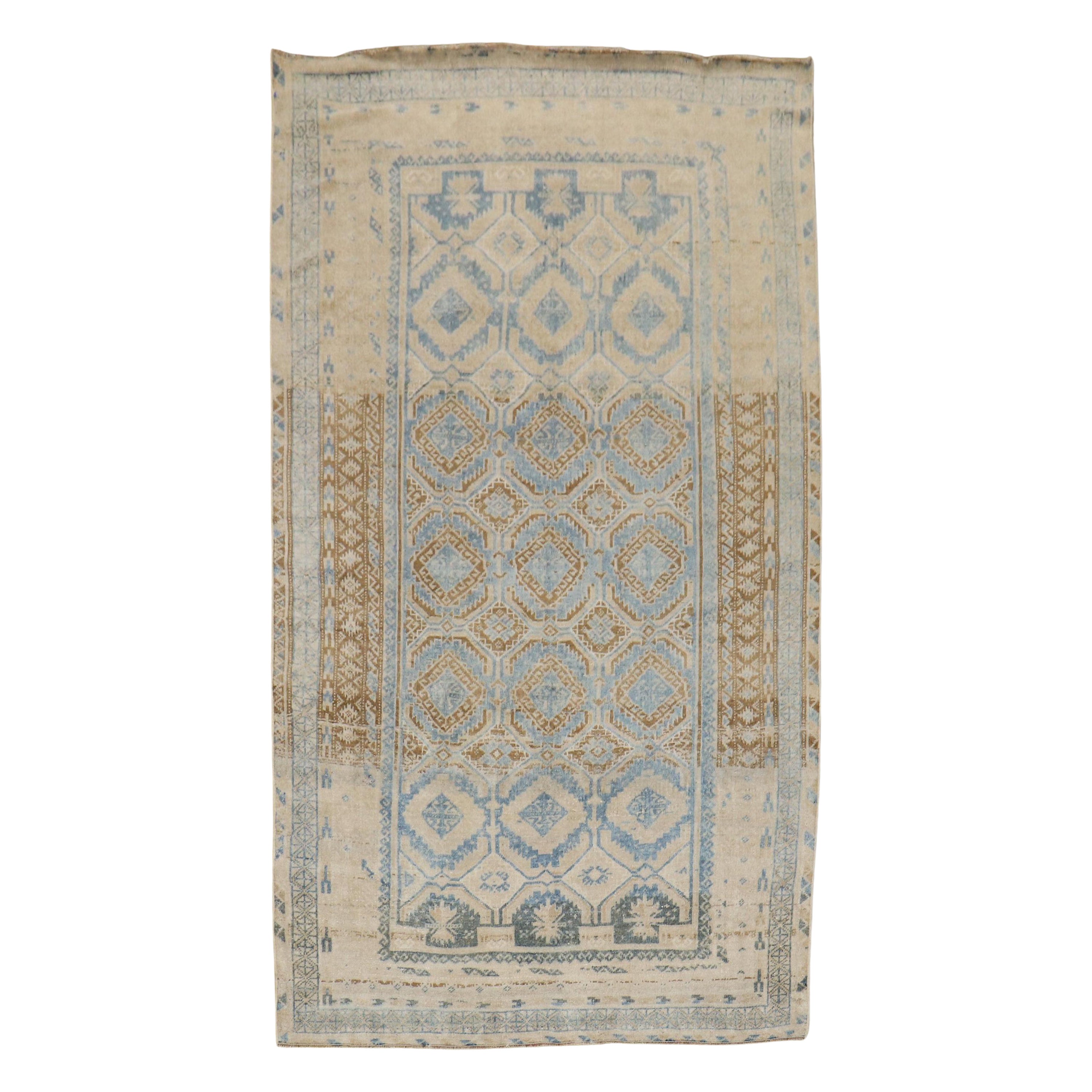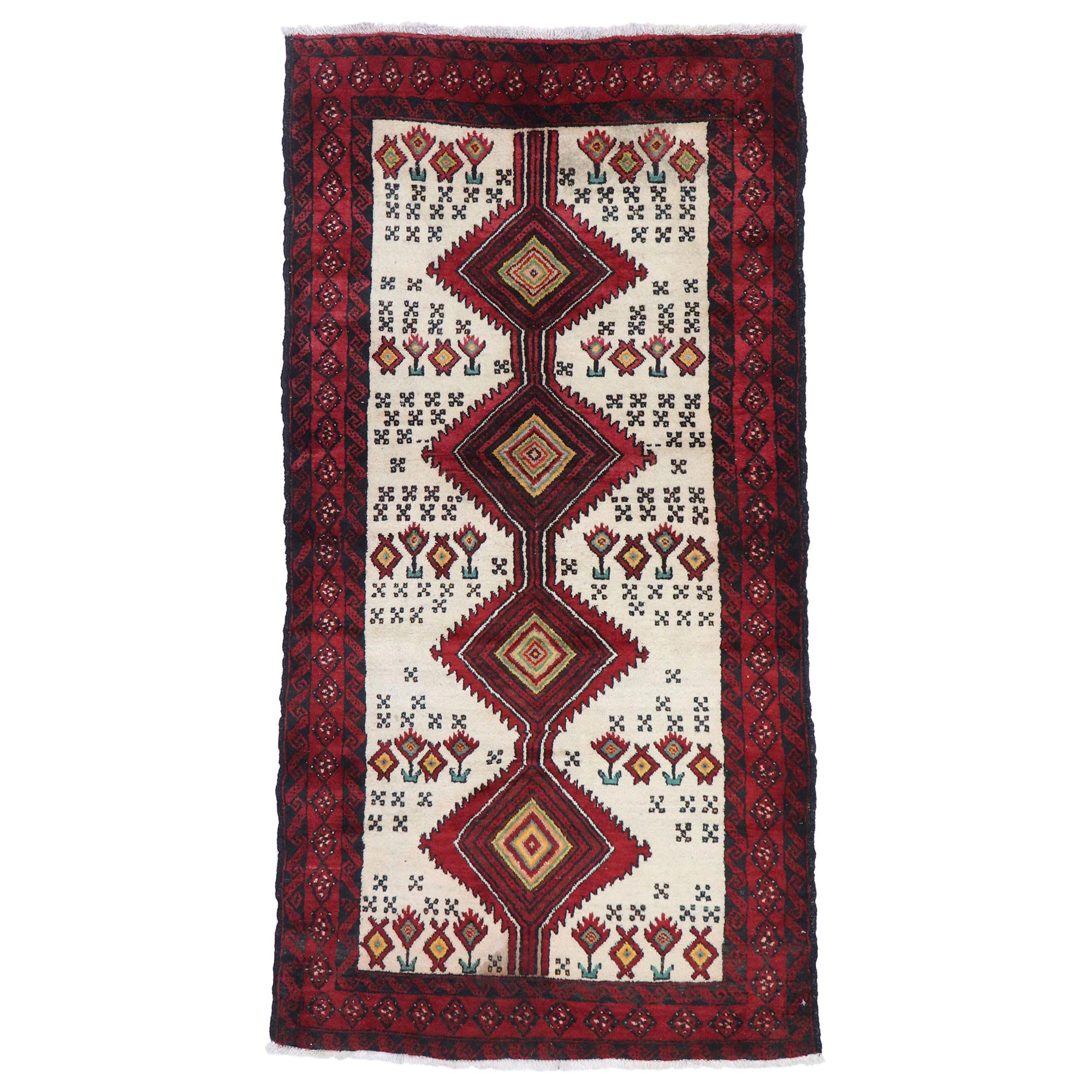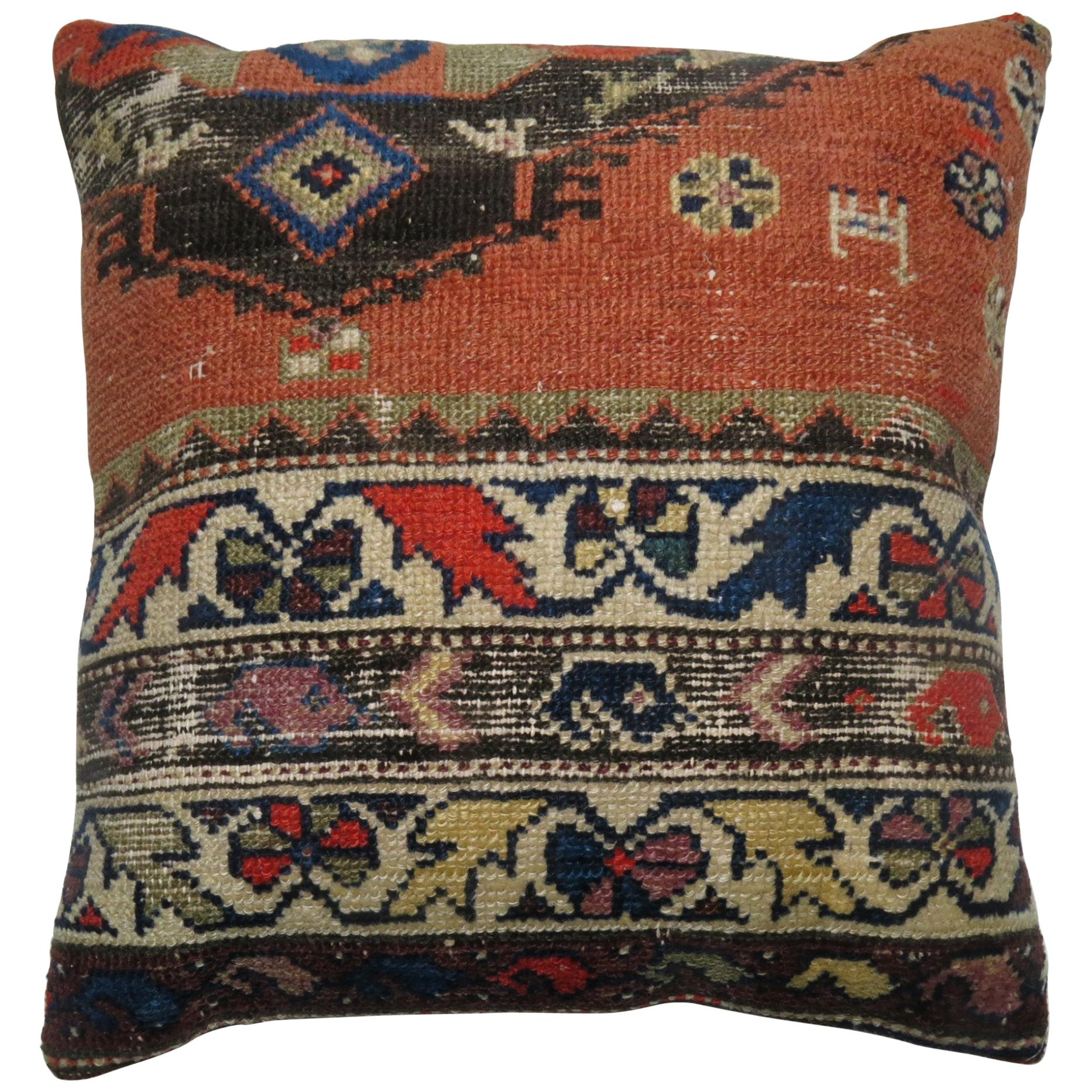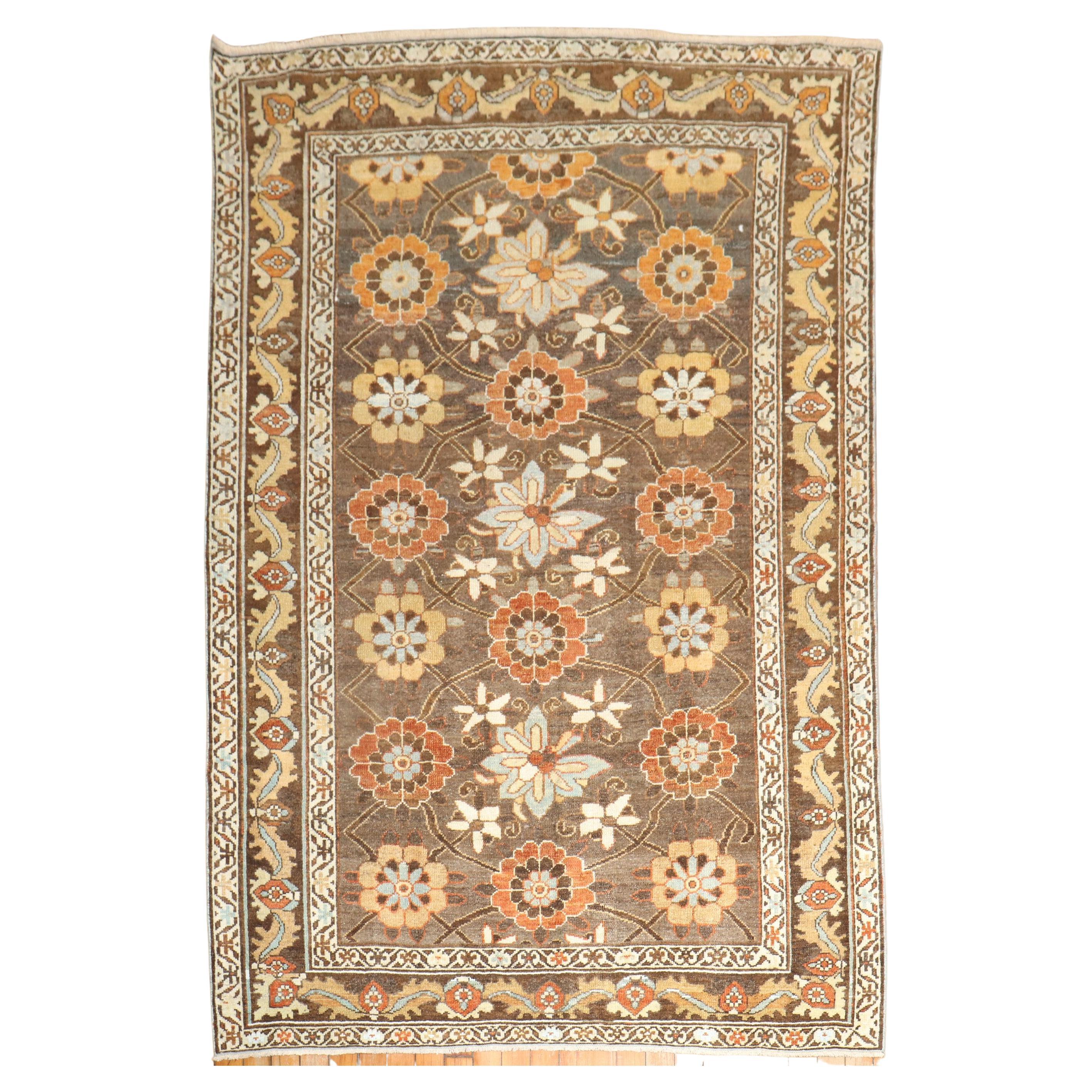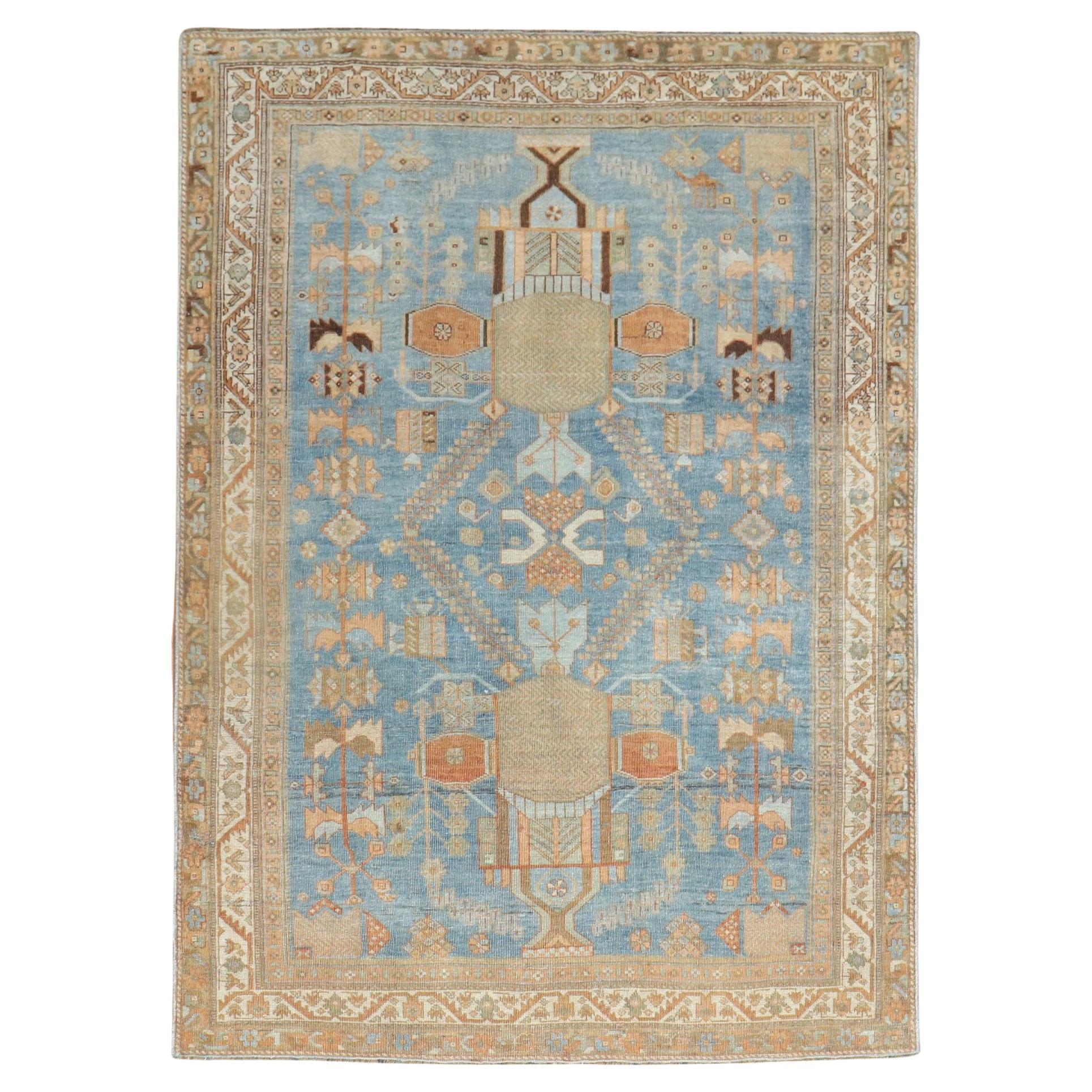Items Similar to Tribal Brown Orange Color Persian Balouch Rug
Want more images or videos?
Request additional images or videos from the seller
1 of 8
Tribal Brown Orange Color Persian Balouch Rug
About the Item
A tribal balouch rug from the early 20th century in brown and orange accents, circa 1930
Measures: 2'6” x 3'10”.
About the Seller
5.0
Platinum Seller
These expertly vetted sellers are 1stDibs' most experienced sellers and are rated highest by our customers.
Established in 1975
1stDibs seller since 2011
1,414 sales on 1stDibs
Typical response time: <1 hour
- ShippingRetrieving quote...Ships From: New York, NY
- Return PolicyA return for this item may be initiated within 3 days of delivery.
More From This SellerView All
- Tribal Persian Balouch RugLocated in New York, NYPersian Balouch Accent Size rug from the 2nd quarter of the 20th century in blue, brown and sand tones Measures: 3'11'' x 6'9''.Category
Vintage 1930s Industrial Persian Rugs
MaterialsWool
- Tribal Traditional Orange Brown Persian Rug PillowLocated in New York, NYPillow made from a tribal 20th century Persian rug. Measures: 16" x 16".Category
20th Century Tribal Persian Rugs
MaterialsWool, Cotton, Foam
- Brown Persian Veramin RugLocated in New York, NYAn accent size early 20th century Persian Veramin rug in predominantly brown Measures: 4'6" x 6'5".Category
Early 20th Century Persian Rustic Persian Rugs
MaterialsWool
- Zabihi Collection Antique Persian Blue Tribal RugLocated in New York, NYPersian Tribal small size Rug from the 2nd quarter of the 20th century size 4'4'' x 5'8"Category
20th Century Persian Malayer Persian Rugs
MaterialsWool
- Vintage Ersari Tribal Room Size Rug in Gray and BrownLocated in New York, NYA rare room size Afghan Ersari rug in brown and gray. Usually found in 6 x 9 up to 8 x 10 size formats this one is a full room size piece.Category
Mid-20th Century Afghan Tribal Central Asian Rugs
MaterialsWool
- Blue Orange Traditional Persian Malayer RugLocated in New York, NYA small size early 20th century Persian Malayer rug in blue and orange Measures: 2'7" x 4'7".Category
Early 20th Century Persian Malayer Persian Rugs
MaterialsWool
You May Also Like
- Antique Persian Balouch Tribal RugLocated in New York, NYAntique Persian Balouch Tribal Rug 2'9'' x 5'2'' The medium camel-tone field shows a side-slipped pattern of two and one half columns each of eight hooked "Memling guls" with lozenge...Category
Vintage 1920s Persian Rugs
MaterialsWool
- Vintage Persian Baluch Rug with Tribal StyleLocated in Dallas, TX77712 Vintage Persian Baluch rug with Tribal Style 03'04 x 06'06. Warm and inviting with nomadic village charm, this hand-knotted wool vintage Persian Baluch rug is a captivating vis...Category
Late 20th Century Persian Tribal Central Asian Rugs
MaterialsWool
- Tribal Turkoman Inspired Mid-20th Century Handmade Persian Malayer Accent RugLocated in New York, NYA vintage Persian Malayer accent rug handmade during the Mid-20th Century inspired by Central Asian tribal Turkoman carpets. Measures: 4' 7" x 6' 4".Category
Mid-20th Century Persian Tribal Persian Rugs
MaterialsWool
- Tribal Mid-20th Century Handmade Persian Turkoman RunnerLocated in New York, NYA vintage Persian tribal Turkoman rug in runner format handmade during the mid-20th century. Although this rug is of Persian origin, the roots of Turkoman rugs originated in the Central Asian region. Measures: 1' 6" x 10' 4" Central Asian Rugs & Carpets: Central Asia is a vast area stretching from Northeastern Persia to western China, and from northern Afghanistan to the southern edge of Russia. The carpets can be usefully divided into three groups: the nomadic Turkmen rugs of Turkmenistan, northern Afghanistan, and northeastern Persia; the non-Turkmen tribal pieces from Kazakhstan, Uzbekistan, and Kirghizstan; and the urban creations of Khotan, Yarkand, and Kashgar, oasis cities of Western China (Xinjiang Province). Commercially, the most important group is from Khotan, the easternmost of the Chinese Turkestan cities. The craft of rug weaving is primarily in the hands of Muslim Uighurs. Khotan carpets mix purely Central Asian design themes with Chinese elements. Native Khotan devices include pomegranate trees, upright flowers, round medallions, and yellow or red grounds. Chinese motives include triangular fretwork corners, swastika fretwork, and Yun-Tsao Tou (clouds and rain) diagonally striped polychrome borders. Cotton foundations, asymmetrical (Persian) knots, and medium weaves are standard. Some vintage Khotan are in horizontal, pictorial layouts with multiple various vases and plants. Saphs (multiple prayer niche panel carpets) are also a Khotan specialty. Others employ stepped and layered lozenge medallions, singly or in pairs. Still others, almost all antique, feature a stylized version of the allover Persian Herati design. Many of the oldest pieces employ brown wool wefts. Antique and vintage Khotans are almost always in the k’ang (double square) layout, conforming to the local household plans. Only relatively recently has the 6’ by 12’ or 7’ by 16’ format been replaced by the 9’ by 12’ size. As a result, an antique room size Khotan carpet is very uncommon. Reds are cinnamon, tomato and rust, never wine reds, crimson, or scarlet. Yarkand, farther west on the old Silk Road specializes in multi-medallion long carpets while Kashgar, farthest west and most under Persian influence, has traditionally knotted allover pattern pieces with finer weaves, often with silk piles, and enriched with medal thread, on cotton foundations. Extant Kashgars go back to the 17th century, but the carpet craft in Chinese Turkestan must be much older as fragments have been recovered from local tombs of the early C.E. period. Kashgars are the rarest of all East Turkestan rugs. Most available vintage East Turkestan carpets are interwar Khotans, many with pleasingly soft decorative palettes. The non-Turkmen nomads include the Kazakh, Kirghiz, Uzbek, and Karakalpak groups. Like the Turkmen, they were once all seasonally migratory, dwelling in round felt tents (yurts), but have been settled, at least partially, in the villages, and have taken up crafts and agriculture instead of sheep herding. As a result, carpet production has transitioned from domestic tent use to commercial sale, but the roots of long traditions are still evident. The Uzbeks weave...Category
Mid-20th Century Persian Tribal Persian Rugs
MaterialsWool
- Vintage Persian Baluch RugLocated in New York, NYA vintage Persian Baluch carpet from the mid-20th century.Category
Mid-20th Century Persian Tribal Central Asian Rugs
MaterialsWool
- Antique Persian Baluch RugLocated in New York, NYAn antique Persian Baluch rug from the second quarter of the 20th century.Category
Vintage 1930s Persian Tribal Persian Rugs
MaterialsWool
